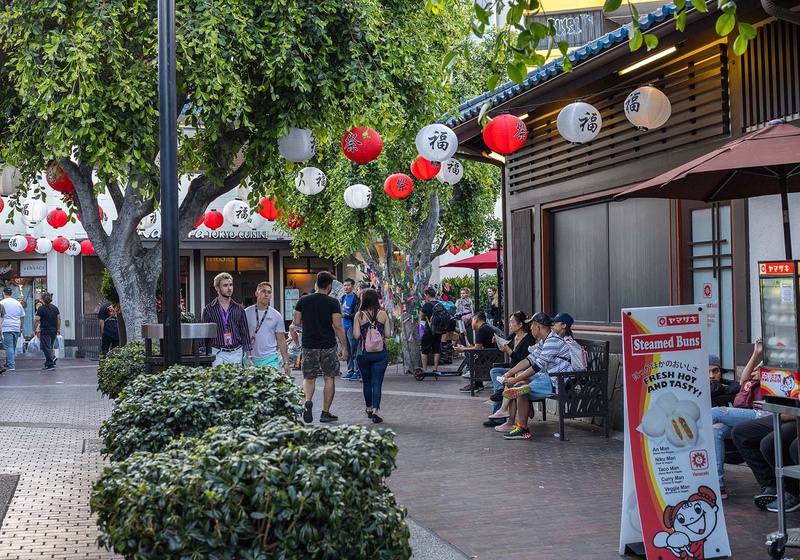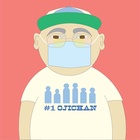Longtime residents will tell you that Los Angeles’ Little Tokyo almost died in the 1990s. Lasting physical and psychological scars lingered from unjust incarceration during World War II, and the city’s planned Civic Center expansion threatened to further dissolve trust and resident control in the historic neighborhood. Facing a long and uncomfortable history with outsider-led policies and redevelopment, many Japanese American residents had been forced out of Little Tokyo and were not returning.
The COVID-19 crisis threatens to devastate the neighborhood once again. Its eateries, boutiques, and small businesses are struggling to stay afloat amid an unprecedentedly challenging small business landscape, and face heightened hardship due to rising anti-Asian racism that has spread alongside the deadly virus. For a community that has faced its fair share of battles, for some, this one feels like the biggest yet.
But Little Tokyo is equipped with a critical asset in this latest crisis: a rich history of fighting not only for its survival, but for resident control and ownership over the process. The long-term effects of COVID-19 remain to be seen, but at Little Tokyo Service Center (LTSC), our decades of experience working with Little Tokyo residents tell us that arts and culture will play a vital role in ensuring community control over recovery and rebuilding. Even as we pivot to address immediate needs for food, safety, and financial security, we know that in the months to come, our efforts must center the community’s cultural assets and use the arts to preserve, support, and strengthen community ownership over its recovery. Little Tokyo has been through many struggles before, and in this uncertain moment, we must pay attention to how it has overcome them in the past.
Preserving cultural and artistic assets to retain community control
COVID-19 has ushered in new challenges for Little Tokyo, but it has also heightened long-standing concerns the community has been battling for decades. Beneath the pre-pandemic bustle of just a few months ago, deep socioeconomic disparities hid in plain sight. Most Little Tokyo residents live below the federal poverty line, and the neighborhood’s small businesses face development pressures, rising rents, and threats of displacement.
Adjacent “ethnic communities” face similar issues. Neighboring Boyle Heights made national headlines for its struggles against gentrification and “artwashing”—when mid- and high-priced art institutions follow low-income artists into a working-class community of color, raising prices and displacing longtime residents. And historic, culturally rich places across the city risk losing their unique and long-fought-for character.
Amid this landscape, Little Tokyo residents, businesses, activists, and nonprofits have been fighting to ensure the neighborhood’s unique cultural and artistic strengths are preserved under community control. We view this effort as critical to not only honor the physical qualities of the community, but to highlight its character, people, and multicultural history as a way of combatting displacement and shifting neighborhood dynamics.
One example of this approach is LTSC’s +LAB Artists in Residence (+LAB AIR) program, designed to help local residents and small businesses leverage the arts to address displacement pressures in Little Tokyo. The impetus behind the project stemmed from another threat to the neighborhood’s character: In 2013, Little Tokyo advocates learned of several publicly owned plots of land slated for redevelopment, including the historic First Street North block. This was around the same time that the city’s Metro unveiled plans to remake the adjacent Little Tokyo stop into Los Angeles’ second-busiest transit hub. These new developments raised major concerns about the disruption of local small businesses and the destruction of historic neighborhood assets, prompting advocates to organize for community control over the block.
We launched the +LAB AIR program to harness the creative energy of artists to preserve community control over publicly owned land in Little Tokyo, including the First Street North block. As a true community effort, the program was a partnership between LTSC, Japanese American Cultural & Community Center, the Japanese American National Museum, Visual Communications, Sustainable Little Tokyo, and independent local artists, and was overseen by a committee to ensure the residency supported the needs of the community. The artists were required to immerse themselves in the neighborhood by living on First Street North in the modest, centrally located Daimaru Hotel for three months, where they shared space and time with long-term residents.
Residency artists created a collective workspace out of a then-empty ground floor storefront and used the space to engage the community through free public workshops and performances on issues such as displacement, homelessness, and strengthening neighborhood ties. The goal was to bolster the assets that already existed in the community, and to use art to engage residents in the broader socioeconomic challenges facing the neighborhood. While we are still fighting to regain control over the historic block, the most important outcomes of the program were to strengthen collaborative organizing throughout the neighborhood, create a network of proactive, community-engaged artists who see Little Tokyo as a home, and identify innovative, culturally based solutions to complex socioeconomic challenges. This is a collective resource we are drawing on as we respond to the COVID-19 crisis.
Although the challenges of displacement may seem unrelated to those of a pandemic, they are more connected than one might think, as crises and inequitable recoveries disproportionately devastate communities already under siege. Although we are still in the early stages of planning a recovery, Little Tokyo is looking to arts-based approaches like +LAB AIR to ensure long-term, community-led resilience.
Drawing from past efforts to build collective power and vision
With the COVID-19 shutdown still in place in Los Angeles, our current priorities are to support Little Tokyo residents and small businesses by addressing health and safety, finances, food insecurity, and social isolation. This last issue—which threatens the social fabric of our community—is where arts and culture work will be most integral, even amid unprecedented physical separation.
Learning from our past arts-based projects, we are focusing on building stronger relationships with specific segments of the community, particularly toward supporting and developing the leadership of low-income community artists and residents. While it is still too early to draw conclusions, by continuing to integrate arts and culture into community development and prioritizing the interests and leadership of low-income residents of color, we hope to recover and rebuild a stronger neighborhood capable of responding to any challenge with its own collective power and vision. In doing so, we will be building upon a long legacy of community-led organizing—one that views arts and culture as essential to ensuring community health and well-being.
* This article was originally published on brookings.edu on May 19, 2020.
© 2020 Kenji Liu





